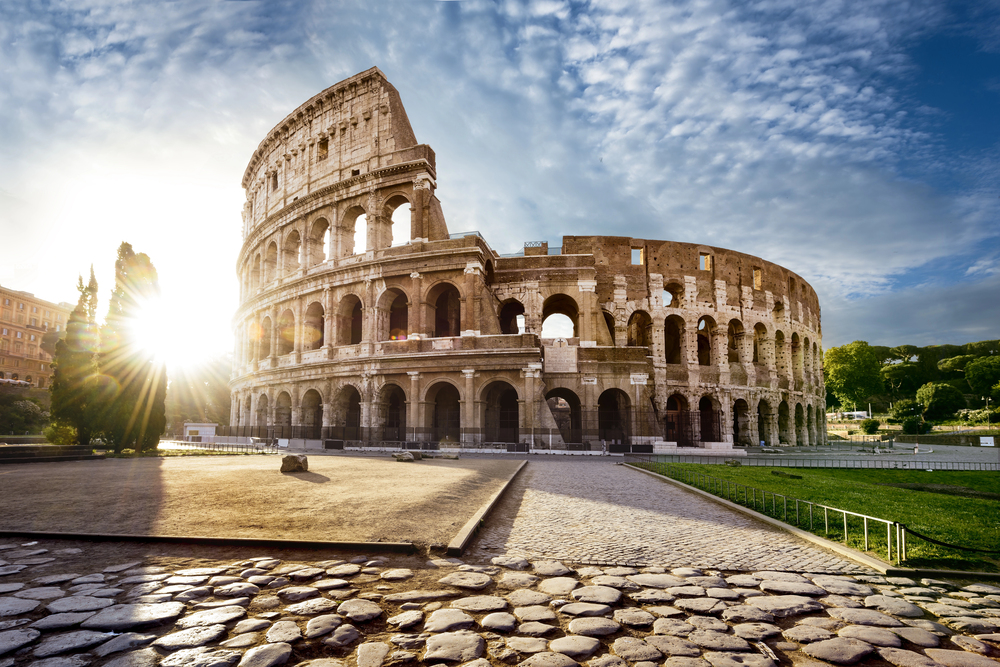Timeless Treasures Around the Globe
Ethan Sawyer
2025-10-02
6 min read

A Monumental Journey Through Time
From the dusty corridors of the Great Pyramid of Giza to the stone whispers of Stonehenge, the world is adorned with monuments that stand as eternal testaments to human achievement. These iconic historical landmarks have survived the corrosive hand of time, offering us glimpses into the lives, ambitions, and artistry of ancient civilizations. But why do these ancient structures captivate us still? Perhaps it's their sheer size, their mystery, or the stories they tell. Or maybe it is simply their ability to connect us across millennia, reminding us of a shared heritage. This blog post will take you on a fascinating tour of some of the world's most iconic historical monuments, exploring what makes them so significant and why they continue to draw us in.
Stone Sentinels of the Past
The Majestic Colosseum
The Colosseum, towering above Rome's bustling streets, is a marvel of ancient engineering. Commissioned by Emperor Vespasian in AD 70, this massive amphitheater could seat up to 50,000 spectators. It hosted gladiatorial contests, public spectacles, and became a symbol of the Roman Empire's might. Beneath the Colosseum's arches lies a labyrinth of corridors and chambers once used to house gladiators and wild animals. Its architecture, with its distinctive tiers and arches, influenced stadiums for centuries to come. Today, the Colosseum stands as a poignant reminder of both the grandeur and brutality of ancient Rome. Over 4 million visitors walk through its ancient arches annually. Those stone walls have witnessed history and offer a palpable connection to the past. Its preservation and continued relevance highlight mankind's enduring fascination with history.
Secrets of Stonehenge
Amidst the rolling plains of Wiltshire, England stands Stonehenge, a prehistoric monument shrouded in mystery. Comprising massive standing stones arranged in a circular formation, Stonehenge is estimated to have been constructed between 3000 BC and 2000 BC. Archaeologists have long pondered its purpose—is it an astronomical calendar, a burial ground, or a place of ritual? While its secrets remain, what is clear is the incredible ingenuity required to transport and erect these stones. Some weigh up to 25 tons and originated from over 150 miles away. Stonehenge continues to fascinate and frustrate, drawing historians, tourists, and artists alike. Its allure lies in its enigma, with each theory adding to its tapestry of intrigue.

Walls Woven Through Time
The Great Wall of China, stretching over 13,000 miles, is an astounding feat of defensive architecture. Constructed over several dynasties, including the Qin and Ming, the wall was designed to protect against invasions and raids. Its construction is a testament to human endurance, with armies of laborers working across treacherous terrain. The wall features watchtowers, garrisons, and beacon towers, offering a glimpse into ancient military strategies. Today, the Great Wall is a symbol of China's strength. Its undulating path through mountains and deserts tells tales of conquest, defense, and unification. Walking its ancient stones is like stepping into the pages of time, each brick echoing the footsteps of history.
Echoes from Ancient Egypt
The Great Pyramid of Giza, the most famous of Egypt's pyramids, is a marvel of ancient engineering. Built as a tomb for Pharaoh Khufu around 2560 BC, it originally stood 146.6 meters tall. It was the tallest man-made structure in the world for over 3,800 years. Its construction remains a topic of debate, with theories ranging from ramps and levers to alien intervention. Whatever the method, it entailed quarrying massive limestone blocks and transporting them across vast distances. The pyramid's precision and grandeur continue to inspire awe. It embodies the Egyptians' architectural prowess and their beliefs about the afterlife. Today, it stands as a symbol of ancient Egypt's power and enduring mystique.
The Enduring Legacy of Monuments
These monuments, though separated by continents and cultures, share a common thread—they are reflections of human ambition, creativity, and resilience. They defy the passage of time, telling stories of civilizations long gone, and remind us of our shared heritage. The allure of these timeless treasures lies not just in their beauty or scale but in the stories they embody. They transport us across the ages, offering glimpses into lives and societies vastly different from our own. Exploring these historical monuments enriches our understanding of who we are and where we've come from. They inspire us to reflect on our legacy, as we continue to build societies that future generations may one day marvel at.
Step Into History
There is a certain magic in standing before a monument that has witnessed centuries unfold. These iconic landmarks connect us to the past, grounding us in a history that goes beyond individual nations and cultures. They challenge us to preserve the stories they hold while inviting us to explore the depths of our imaginations. Next time you visit a historical monument, pause and ponder the countless tales whispered by its stones. Allow yourself to be transported to an era of emperors and pharaohs, of grand spectacles and mysterious rituals. These monuments remind us that while the world has changed, the human spirit remains as unconquerable as the structures we leave behind. For those intrigued by the wonders of history, explore more and start your own voyages of discovery. Visit historical societies, read books and documentaries, or join discussions that unravel the mysteries of our shared past. Each step we take in understanding these timeless treasures is a step toward understanding ourselves.
More Trending Articles

Cultivating Your Best Self Personal Growth Tips for a Fulfilling Life Journey
Harper Reed
2025-11-30


